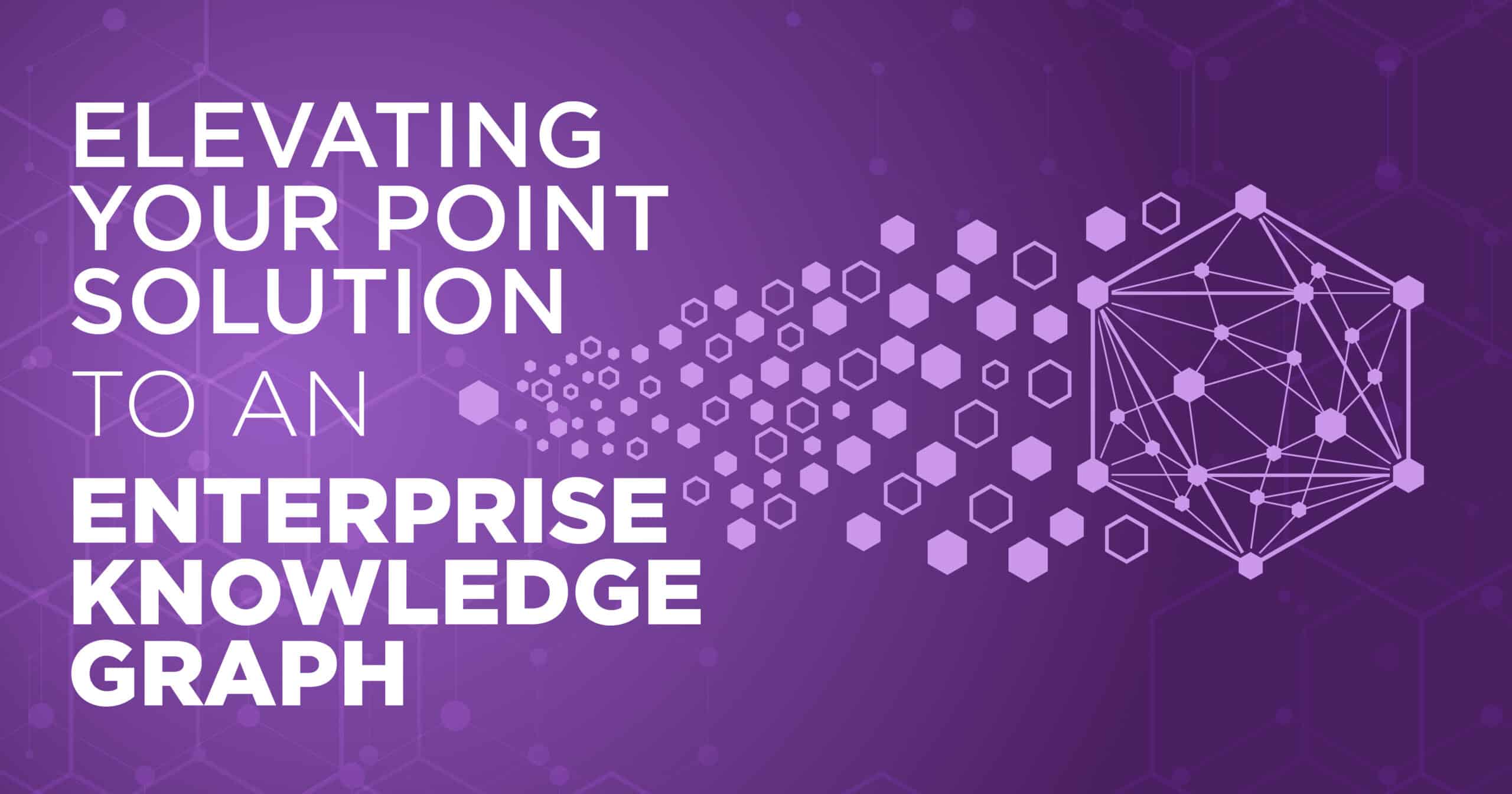I am fortunate to be able to speak with many vendors in the Graph space, as well as company executives and leaders in IT and KM departments around the world. So many of these people are excited about the power of knowledge graphs and the graph databases that power them. They want to know how to turn their point solution into an enterprise-wide knowledge graph powering AI solutions and solving critical problems for their clients or their companies. I have answered this question enough times that I thought I would share it in a blog post for others to learn.
Knowledge graphs are new and exciting tools. They provide a different way of managing information and can be used to solve a wide range of problems. Early adopters of this technology typically start with a small, targeted solution to “try it out.” This is a smart way to learn about any new technology, but all too often the project stops at a point solution or becomes pigeonholed for solving one problem when it can be used to solve so many more. The organizations that can grow and expand their graph solution have three things in common:
- A backlog of use cases,
- An enterprise ontology, and
- Marketing and change management.
Knowledge graphs can solve many different types of problems. They can be recommendation engines, search enhancers, AI engines, data fabrics, or knowledge portals. That first solution that an organization picks only does one of these things, and it may also be targeted to just one department or one problem. This is a great way to start, but it can also lead to a stovepipe solution that misses some of the real power of graphs.
When we start knowledge graph projects with new clients, we always run a workshop with business users from across the organization. During this workshop, we share examples of what can be done with knowledge graphs and help them identify a backlog of use cases that their new knowledge graph can solve. This approach creates excitement for the new technology and gives the project team and the business a vision for how to add to what was built as part of the first solution. Once the first solution is effectively launched, the organization has a roadmap for what is next. If you have already launched your solution and do not have a backlog of use cases, that is okay. You can host a graph workshop at any time to create a list of the next projects. The most important thing is to get that backlog in place and begin to share it with your leadership team so that they can budget for the next project.
The structure of a graph is defined by an ontology. Think of an ontology as a model describing the information assets of the business and how they fit together. Graph databases are easy to change, so organizations can get started with simple knowledge graphs that solve targeted problems without an ontologist. The problem is, the solution will be designed to solve a specific problem rather than being aligned with the business as a whole. A good ontologist will design a model that both solves the initial problem being addressed and aligns with the larger business model of the organization. For example, a graph-enhanced search at a manufacturing company may have products, customers, factories, parts, employees, and designs. The search could be augmented with a simple knowledge graph that describes parts. An ontologist would use this opportunity to model the relationships of all of the organization’s entities up front. This more inclusive approach would allow for a wider range of search results and could serve as the baseline for a number of other projects. This same graph could fuel a recommendation service or chatbot for their customers. It could also be used as the map for their data elements to create a data fabric that simplifies the way people access data within the organization. One graph, properly designed, can easily expand to become the enterprise backbone for a number of different enterprise-centric applications.
Building a backlog of use cases and creating a proper ontology helps ensure that there is a framework and plan to grow. The final challenge in turning a point solution into an enterprise knowledge graph has to do with marketing the solution. Knowledge graphs and graph databases are still new, and the number of things they can do is very broad (see Using Knowledge Graph Data Models to Solve Real Business Problems). As a result, executives often do not know what to do with knowledge graphs. It is important to set success criteria for your point solution and regularly communicate the value it adds to the business. This brings attention to the solution and opens the door for discussions about expanding the knowledge graph. Once you have the executive’s attention, educate them as to what knowledge graphs can do through the industry literature and the backlog of use cases that you have already gathered. This will allow executives to see how they can get even greater value from their investment and drive more funding for your knowledge graph.
Knowledge graphs are powerful information management tools that are only now becoming fully understood. The leading graph database vendors offer free downloads of their software so that organizations can start to understand the true power of these tools. Unfortunately, too often these downloads are used only for small projects that disappear over time. The simple steps I have described above can pave the way to turn your initial project into an enterprise platform powering numerous, critical Artificial Intelligence solutions.
Learn more about how we enable this for our clients by contacting us at info@enterprise-knowledge.com.

